Author: Sinikka Koskinen
Allan Tiitta: Sinisten maisemien mies. J.G. Granön tutkijantie 1882–1956 [The man of blue landscapes. A biography of J.G. Granö, 1882–1956]
9 February 2012 | Mini reviews, Reviews
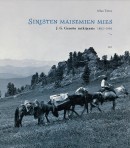 Sinisten maisemien mies. J.G. Granön tutkijantie 1882–1956
Sinisten maisemien mies. J.G. Granön tutkijantie 1882–1956
[The man of blue landscapes. A biography of J.G. Granö, 1882–1956]
Kuvatomittaja [Picture editor]: Taneli Eskola
Helsinki: Finnish Literature Society, 2011. 541 p., ill.
ISBN 978-952-222-292-3
€ 44, hardback
The man of blue landscapes describes the life and work of the Finnish geographer Johannes Gabriel Granö (1882–1956), whose career also reflected Finland’s development as a modern state. Granö was a scientific explorer, writer, a pioneer of Finnish photographic art and a professor of geography at the universities of Tartu (Estonia), Helsinki and Turku. In Estonia he applied scientific method to the study of local history and from Tartu brought the tradition of urban research. Granö spent much of his youth in Omsk in western Siberia, where his father worked as a priest among displaced and deported Finns and Estonians. From 1906 to 1916 Granö made an expedition to Mongolia and the Altai mountains, but his fieldwork remained unfinished when the 1917 revolution broke out; the area was then closed to Western scholars for 70 years. Among Granö’s most important works are the classic travel book Altai, vaellusvuosina nähtyä ja elettyä (‘The Altai, seen and experienced during my years of travel’, 1921) and his methodological masterpiece Puhdas maantiede (‘Pure geography’, 1930). In it Granö outlined a theory of landscapes, and the book was a pioneering work ahead of its time: landscape was examined in terms of the relation between human beings and their environment, as the sum of all the senses.
Translated by David McDuff
Panu Rajala: Naisten mies ja aatteiden. Juhani Ahon elämäntaide [A ladies’ man of ideas. Juhani Aho’s art of living]
26 January 2012 | Mini reviews, Reviews
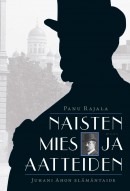 Naisten mies ja aatteiden. Juhani Ahon elämäntaide
Naisten mies ja aatteiden. Juhani Ahon elämäntaide
[A ladies’ man of ideas. Juhani Aho’s art of living]
Helsinki: WSOY, 2011. 441 p., ill.
ISBN 9789510374412
€ 35, hardback
Of Juhani Aho (1861–1921) it is said that he created what have proved to be the most enduring descriptions of how traditional Finland began to be modernised; his most famous book is the novella Rautatie (‘The railway’, 1884) which portrays the arrival of the railway in the Finnish countryside. This new biography also shows once again how many international influences can be found in the work of Aho, who is often called a national author. Aho was active in student politics, and as a newspaper journalist. He was nominated for the Nobel Literature Prize twelve times, but for various reasons, some of them connected with language politics, lobbying on his behalf was not successful. Aho developed Finnish prose, bringing to it realism and impressionistic style. His experiences during a visit to Paris in 1889 form the basis of his novel Yksin (‘Alone’), which caused a stir in part because of its erotic flavour. This book by the author and literary scholar Panu Rajala provides a versatile insight into Aho’s personal story, the world of his ideas, his opinions on art, and his complex relationships.
Translated by David McDuff
Suomalainen piru. Paholainen kansanperinteessä [The Finnish devil. The Evil One in Finnish folklore]
23 December 2011 | Mini reviews, Reviews
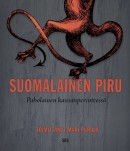 Suomalainen piru. Paholainen kansanperinteessä
Suomalainen piru. Paholainen kansanperinteessä
[The Finnish devil. The Evil One in Finnish folklore]
Toim. [Ed. by] Mari Purola
Kuvitus: [Illustrations]: Christer Nuutinen
Helsinki: Finnish Literature Society, 2011. 144 p., ill.
ISBN 978-952-222-289-3
€ 25, hardback
In Finnish folklore the Devil has borrowed features both from ancient popular belief and from the Christian faith. Unlike the devil of Christianity, the Finnish devil is not wholly evil, and the relation between man and devil may sometimes recall a contractual relationship: man can benefit from his link with the devil without losing his soul. In the mythological stories the devil is a a creature that supports the values of village society, who punishes misdemeanours and with whose help inexplicable phenomena like surprisingly good luck or illness can be explained. Finnish folk belief contains a numerous group of lesser magical figures such as elves and sprites. The devil has also borrowed the powers of the ancient gods, such as good luck in hunting from Tapio, and in fishing from Ahti. The folk archives of the Finnish Literature Society contain a collection of devil-themed stories from the 1880s to the 1960s.
Translated by David McDuff
Tuomas Heikkilä & Liisa Suvikumpu: Suomen Turku julistaa joulurauhan. Åbo kungör julfred [Finland’s Turku announces the Christmas peace]
9 December 2011 | Mini reviews, Reviews
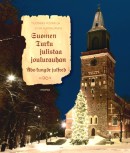 Suomen Turku julistaa joulurauhan. Åbo kungör julfred
Suomen Turku julistaa joulurauhan. Åbo kungör julfred
[Finland’s Turku announces the Christmas peace]
Swedish translation: Malena Torvalds-Westerlund
Helsinki: Kirjapaja, 2011. 71 p., ill.
ISBN 978-952-247-229-8
€ 24, hardback
This bilingual book offers a broad interpretation of a unique Christmas tradition upheld by the Finns: at 12 on Christmas Eve a large proportion of the population falls silent to listen to the declaration of the Christmas peace from Turku cathedral. After its bells have rung noon, the deputy mayor ceremonially opens a manuscript prepared according to mediaeval tradition and reads the announcement in both Finnish and Swedish. After the announcement, the land settles down to celebrate Christmas following traditions dating from the 13th century. The Christmas peace has been announced in Turku almost without interruption since the Middle Ages. The last time it went unread was in 1939, during the Winter War. The Finnish Broadcasting Company broadcasts the occasion to all the member countries of the European Broadcasting Union EBU. The Christmas peace is also sent out into the world by Swedish radio, reaching a total of some 140 countries.
Translated by Hildi Hawkins
Jouko Halmekoski: Orjamarkkinat. Huutolaislasten kohtaloita Suomessa [The slave market. The fate of auctioned pauper children in Finland]
17 November 2011 | Mini reviews, Reviews
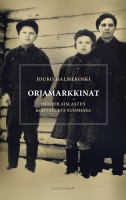 Orjamarkkinat. Huutolaislasten kohtaloita Suomessa
Orjamarkkinat. Huutolaislasten kohtaloita Suomessa
[The slave market. The fate of auctioned pauper children in Finland]
Helsinki: Ajatus Kirjat, Helsinki, 2011. 225 p., ill.
ISBN 978-951-20-8391-6
€ 26, hardback
Auctions of people were at their most widespread in Finland in the 1870s and 1880s; ‘auctioned paupers’ were entrusted for a year at a time to the one who put in the lowest bid for the pauper’s upkeep, then recompensed by the local authority. The people who were auctioned off included children, the elderly, disabled and mentally ill people. These auctions were banned in 1923, but they continued for some time thereafter. Although the practice was widely known about, the paupers’ shame prevented much discussion of the subject. Those who wished to provide help to people in need were probably greatly outnumbered by those who sought to benefit from their plight. In most cases, orphaned children ended up being auctioned off. Children born out of wedlock were another significant group. Jouko Halmekoski advertised in the newspapers in order to trace the lives and descendants of those who were auctioned off. Not all the auctioned paupers’ histories are tales of horror: this book, consisting of 25 of them, also includes stories of children who were treated well.
Translated by Ruth Urbom
Martti Anhava: Romua rakkauden valtatiellä. Arto Mellerin elämä [Garbage on the highway of love. The life of Arto Melleri]
10 November 2011 | Mini reviews, Reviews
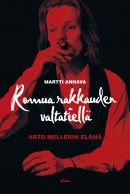 Romua rakkauden valtatiellä. Arto Mellerin elämä
Romua rakkauden valtatiellä. Arto Mellerin elämä
[Garbage on the highway of love. The life of Arto Melleri]
Helsinki: Otava, 2011. 687 p., ill.
ISBN 976-951-1-23700-6
€ 36, hardback
Arto Melleri (1956–2005) has been called the last Finnish bohemian poet. At the age of 35, he received the Finlandia Prize for a collection of poetry entitled Elävien kirjoissa (‘In the books of the living’) as well as an invitation to the Independence Day celebrations at the Presidential Palace, from which he was thrown out. The literary editor Martti Anhava traces his friend’s life from his schooldays in Ostrobothnia to his turbulent life in Helsinki. There are interviews with family members, friends, writers, musicians, theatre-makers; Melleri wound up studying dramaturgy at the Theatre Academy. The year 1978 saw the presentation of Melleri, Jukka Asikainen and Heikki Vuento’s play Nuorallatanssijan kuolema eli kuinka Pete Q sai siivet (‘The death of a tightrope walker or how Pete Q got wings’). Breaking completely with the mainstream political theatre of the 1970s, it became a cult show. The last volume by this poet of bold, often cruelly romantic visions was Arpinen rakkauden soturi (‘The scarred soldier of love’, 2004).
Translated by Hildi Hawkins
Jaakko Blomberg: Vakauden kaipuu. Kylmän sodan loppu ja Suomi [Longing for stability. Finland and the end of the Cold War]
2 November 2011 | Mini reviews, Reviews
 Vakauden kaipuu. Kylmän sodan loppu ja Suomi
Vakauden kaipuu. Kylmän sodan loppu ja Suomi
[Longing for stability. Finland and the end of the Cold War]
Helsinki: WSOY, 2011. 696 p., ill.
ISBN 978-951-0-37808-3
€ 37, hardback
From Finland’s perspective, the termination of the Cold War era encompassed three significant processes: the Soviet Union’s policy of perestroika, or reform, and the disintegration of its empire; the end of the international arms race and the rise of joint security as a policy aim of the superpowers; and increasing European integration. This book devotes individual chapters to two phases of Finnish foreign policy – interpretation of the Paris Peace Treaty and Finland’s withdrawal from the Agreement of Friendship, Cooperation and Mutual Assistance, which it had signed with the Soviet Union in 1948. The second part of the book focuses on the years 1992–94, when Finland applied to become a member of the European Union and forged relations with the new Russia. Finland’s position in those years was defined by Mauno Koivisto, a cautious president, whose memoirs have served as a key source of material for Blomberg. The negotiations surrounding the region of Karelia, which was ceded to the Soviet Union after the war, are illuminated further here. As a Finnish ambassador, Blomberg served in key roles within the Ministry for Foreign Affairs from the late 1980s to the early 21st century.
Translated by Ruth Urbom
Jussi T. Lappalainen: Kuninkaan viimeinen kortti [The king’s last card]
28 October 2011 | Mini reviews, Reviews
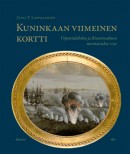 Kuninkaan viimeinen kortti. Viipurinlahden ja Ruotsinsalmen meritaistelut 1790
Kuninkaan viimeinen kortti. Viipurinlahden ja Ruotsinsalmen meritaistelut 1790
[The king’s last card. The naval battles of Viipurinlahti and Ruotsinsalmi 1790]
Helsinki: Suomalaisen Kirjallisuuden Seura, 2011. 214 p., ill.
ISBN 978-952-222-230-5
€ 44, hardback
The War of Gustav III (1788–1790) was a conflict between Sweden and Russia whose aim was to regain the Baltic lands and the eastern areas of Finland for Sweden. The war plan was based on a manoeuvre strategy considered ideal from the end of the15th century in which the aim was to achieve the desired outcome by deploying one’s own forces in such a way that the enemy was forced to surrender without fighting. A substantial part of the Swedish forces were made up of an impressive navy which was nevertheless surrounded by the Russians. The king’s trump card was his archipelago fleet, which managed to defeat the Russians completely on 9 July 1790. The battle of Ruotsinsalmi was, in terms of the number of vessels involved, one of the largest naval battles ever waged. Its anniversary is celebrated as the anniversary of the Finnish naval forces. The book traces the background of the reasons for the outbreak of the war and its consequences and describes the vessels weaponry and tactics. Included are numerous contemporary maps and battle paintings. Translated by Hildi Hawkins
Juha Sihvola: Maailmankansalaisen uskonto [The religion of the world citizen]
21 October 2011 | Mini reviews, Reviews
 Maailmankansalaisen uskonto
Maailmankansalaisen uskonto
[The religion of the world citizen]
Helsinki: Otava, 2011. 199 p., ill.
ISBN 978-951-1-21279-9
€ 29, paperback
This book focuses on the core questions of religious philosophy with special emphasis on Christianity, but it also addresses Judaism, Islam and the Middle East conflict as well as conflicts between Hindu nationalists and Muslims. Juha Sihvola, a professor of history, ends up advocating the view which holds that religion and science are largely independent of one another: under-standing the special nature of belief enables a justifiable critique of both religious fundamentalism and radical neo-atheism. In this work, Sihvola examines the relationship of faith and morals to history, freedom of conscience, religious tolerance and the possibilities of developing a more pluralistic society. The ideas of contemporary philosophers John Rawls and Martha Nussbaum seem closest to Sihvola’s own thinking. He formulates an optimistic vision in which religion that is liberal, non-fundamentalist and understands the special nature of belief faces important tasks ahead.
Translated by Ruth Urbom
Vesa Heikkinen & Harri Mantila: Kielemme kohtalo [The fate of Finnish]
14 October 2011 | Mini reviews, Reviews
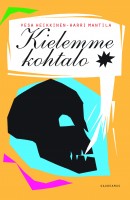 Kielemme kohtalo
Kielemme kohtalo
[The fate of Finnish]
Helsinki: Gaudeamus, 2011. 235 p.
ISBN 978-952-495-188-3
€ 32, paperback
This book sets out to examine the reasons behind concerns about the decay of the Finnish language. The authors maintain that linguistic immutability is too often taken to be a synonym for ‘good’ language, even though a living national language is capable of picking up new influences all the time without being in danger of destruction. The factor which the authors consider to be the greatest threat to Finnish is not youth slang, global English, or immigration but Finglish, the practice of using a mixture of Finnish and English, which has become widespread in research, commerce and government. The names of companies and public bodies are changed into opaque English-language abbreviations. Linguists are also concerned by the bureaucratisation of language that is often linked with public-sector reforms. Increasing linguistic inequality is the most serious threat described in this book: in the worst-case scenario, children’s and young people’s poor skills in Finnish could increase the gaps between classes in society and give rise to a growing mass of the excluded alongside an elite who are well-versed in the nuances of the language.
Translated by Ruth Urbom
Lars Levi Laestadius: Lappalaisten mytologian katkelmia [Fragments of Lapp mythology]
23 September 2011 | Mini reviews, Reviews
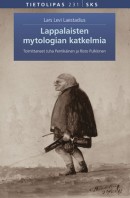 Lappalaisten mytologian katkelmia
Lappalaisten mytologian katkelmia
[Fragments of Lapp mythology]
Toimittaneet [Edited by]: Juha Pentikäinen ja Risto Pulkkinen
Suomentanut [Translated into Finnish by]: Risto Pulkkinen
Helsinki: Suomalaisen Kirjallisuuden Seura / the Finnish Literature Society: 400 p., ill.
ISBN 978-952-222-257-2
€ 28, paperback
The Swedish pastor Lars Levi Laestadius (1800–1861) is known as a preacher who criticised the dead dogma of the church and as the founder of Finland’s largest charismatic sect – although Laestadius did not even live in Finland. He was also a journalist who was active in the temperance movement and wrote a great deal of religious literature; Laestadius may be the best-known Sámi of all time. As well as an ecologist and botanist, he was also a philologist with a knowledge of the dialects of the Sámi language, and as an ethnographer Laestadius studied the history of the Sámi, collecting their beliefs into a system he called the Lapps’ mythology. It is only now that this work has been published in its entirety in Finnish. An expedition funded by Louis Philippe, king of France, in 1838–1840, played a decisive part in the birth of the work: Laestadius was appointed guide to the expedition, and a study of Lapp ‘history’ was commissioned from him. Part of the manuscript was long lost, but in 1946 it was discovered in the library of Yale University.
Translated by Hildi Hawkins
Matti Salminen: Yrjö Kallisen elämä ja totuus [The life and truth of Yrjö Kallinen]
15 September 2011 | Mini reviews, Reviews
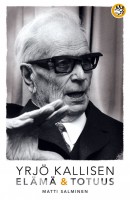 Yrjö Kallisen elämä ja totuus
Yrjö Kallisen elämä ja totuus
[The life and truth of Yrjö Kallinen]
Helsinki: Like Kustannus, 2011. 271 p., ill.
ISBN 978-952-01-0612-6
€ 27, hardback
Counsellor of Education Yrjö Kallinen (1886–1976) was a Social Democrat politician, a passionate speaker and a pacifist who served for one parliamentary term as an MP and for two years as a cabinet minister. Kallinen was a working-class man who independently acquired a broad general education. His life and thought contain many paradoxes and contradictions. In the Civil War (1918) he received four death sentences, though he tried to act as a peace-broker between the Whites and the Reds. Kallinen avoided the death penalty but suffered a long prison sentence. After the Second World War he became Minister of Defence, though in spite of holding the post he did not abandon his pacifism. Kallinen was also strongly influenced by oriental religions and theosophy, and he is known as an early advocate of vegetarianism. The most important sources for this biography are Yrjö Kallinen’s own writings, many of which have never been published before, and his recently discovered correspondence. The summaries of Kallinen’s interviews for foreign newspapers open up interesting perspectives on recent Finnish political history.
Translated by David McDuff
Peter von Bagh: Junassa [On the train]
26 August 2011 | Mini reviews, Reviews
 Peter von Bagh
Peter von Bagh
Junassa
[On the train]
Helsinki: Love Kirjat / WSOY, 2011. 255 p., ill.
ISBN 978-951-0-37921-9
€18, hardback
Professor Peter von Bagh, a film director and academic, is the author of a wide range of books on the history of film and culture. In this small-scale volume of essays, he investigates the significant role played by trains and railways in cinematic plot structures since the days of silent film. The text chugs along in a series of snippets, reminiscent of a rail passenger’s experience of scenery zipping past. This book looks at classics of the film noir, Western and romance genres, along with films that have used trains as a deeper metaphor for life. von Bagh also considers the critically derided but widely loved Finnish popular culture from the 1940s and ’50s, as well as fiction. For example, author Juhani Aho’s first novel, Rautatie (‘The railway’, 1884), depicted an individual’s first experience of a train journey with a degree of authenticity that it can be compared to the uproar the Lumière brothers’ early films generated among the audiences. Unfortunately Junassa lacks an index of the works and people mentioned in the text.
Translated by Ruth Urbom
Jean Sibelius kodissaan. Jean Sibelius, i sitt hem. Jean Sibelius at home
19 August 2011 | Mini reviews, Reviews
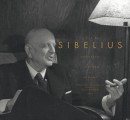 Jean Sibelius kodissaan. Jean Sibelius, i sitt hem. Jean Sibelius at home
Jean Sibelius kodissaan. Jean Sibelius, i sitt hem. Jean Sibelius at home
Toimittanut [Edited by] Jussi Brofeldt
Helsinki: Teos, 2010. 103 p., ill.
ISBN 978-951-851-364-6
€ 29, hardback
The composer Jean Sibelius (1865–1957) disliked being photographed. This book contains 50 stills selected from the documentary film Jean Sibelius at home, a compilation of cinematographic material in which the composer is seen at home in 1927 and 1945. Some of the shots were originally cut, and have not been previously published. The film was made by the brothers Heikki Aho and Björn Soldan, who were neighbours of Sibelius in their childhood – their father was the author Juhani Aho, a friend of the Sibelius family. Founded in the 1920s, the film company Aho & Soldan was influenced by the experimental spirit of the Bauhaus and became known for its commissioned work aimed at spreading the image of Finland abroad. The Sibelius film offers a rare peek into the composer’s home life at his villa of Ainola. In addition to the photographs, the trilingual book also contains seven articles on Sibelius and the film. Heikki Aho’s daughter, the pioneer photographer Claire Aho relates her own memories of the 1945 filming. Jussi Brofeldt, the book’s editor, is her son.
Translated by David McDuff
Sodan haavoittama lapsuus [A childhood scarred by war]
11 August 2011 | Mini reviews, Reviews
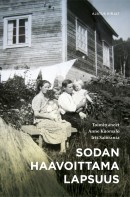 Sodan haavoittama lapsuus
Sodan haavoittama lapsuus
[A childhood scarred by war]
Toimittaneet [Edited by]: Anne Kuorsalo & Iris Saloranta
Helsinki: Gummerus, 2010. 288 p., ill.
ISBN 978-951-20-8107-3
€ 34, hardback
Around 1.5 million Finns were children during the Winter and Continuation Wars of 1939–1944. Three hundred children are estimated to have been killed by bombs, and between 55,000 and 80,000 were orphaned by the war. Many more deaths were caused by diseases such as tuberculosis, polio and cerebral meningitis. Some children lived fairly secure lives on farms with their own families or with relatives; some were sent to live with foster families in Sweden; some were evacuated from Karelia and a small number were interned in camps because of their German heritage. Many under-18s served in the Finnish military and would now be considered child soldiers. Finns who were born in the 1930s and early 1940s have long been a neglected group: for several decades, discussions of the victims of war were avoided for foreign policy reasons as well. It is only in recent years that discussions have emerged concerning the fates of the children who were sent to Sweden during the war and those who were born to Finnish women, fathered by German soldiers. This book includes the stories of thirty people. The views of some refugees who have settled in Finland are included as well, such as the story of Mahmoud, who fled from Iraq via people smugglers.
Translated by Ruth Urbom
